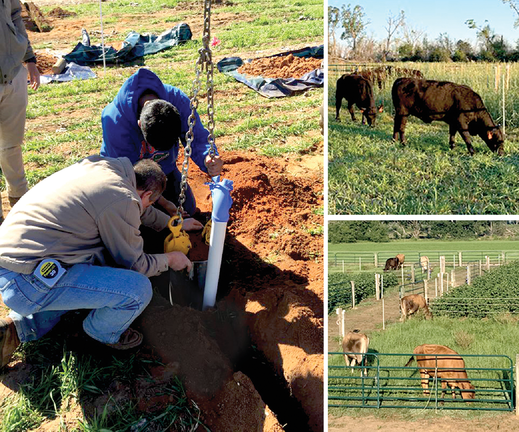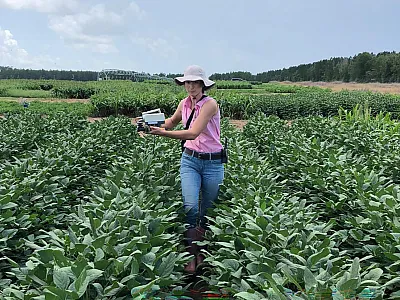Grazing Reduces Nitrate Leaching in North Florida Crop Systems

In Florida, major field crops include cotton, peanuts, corn, and sweet corn, which are all summer crops. After these cash crops are harvested, the land is often left fallow, leaving it prone to soil erosion and nutrient leaching. One place this scenario plays out is the Jackson Blue Spring and Merritt’s Mill Pond basin in the Florida Panhandle where more than half of the nitrates come from agriculture. This can result in severe and prolonged environmental damage.
With the goal of mitigating nitrate leaching and increasing land use efficiency, researchers at the University of Florida studied crop–livestock system options. They investigated nine systems featuring different combinations of cover crops, cropping rotations, grazing intensity, and nitrogen fertilization. After installing drain lysimeters in each experimental plot, they analyzed the leachate for nitrate and ammonium.
Cover crops were associated with lower leachate nitrate concentrations and cumulative nitrogen (N) leaching compared with fallow. Systems containing a warm‐season perennial grass further enhanced this benefit. Cumulative N leaching was lower in systems with grazing animals than in systems without, but surprisingly, grazing intensity had no measurable impact. These findings suggest winter grazing benefits producers without water quality impairment.
Adapted from Santos, E. R. S., Dubeux, J. C. B., Mackowiak, C., Wright, D., & Anguelov, G. (2023). Integrated crop–livestock systems result in less nitrate leaching than ungrazed crop systems in North Florida. Journal of Environmental Quality, 52, 847–858. https://doi.org/10.1002/jeq2.20474
Text © . The authors. CC BY-NC-ND 4.0. Except where otherwise noted, images are subject to copyright. Any reuse without express permission from the copyright owner is prohibited.











